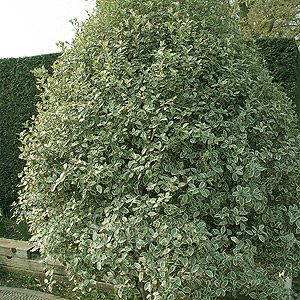Bonsai trees are small trees grown in pots. They look like full-sized trees. Today, we will talk about the Pittosporum Bonsai Tree. This tree is easy to care for and looks amazing.
What is a Pittosporum Bonsai Tree?
The Pittosporum Bonsai Tree is a small, bushy tree. It has shiny green leaves. Sometimes, it even has small, fragrant flowers. This tree can grow both indoors and outdoors.
Why Choose Pittosporum For Bonsai?
Pittosporum is a great choice for bonsai. Here are some reasons why:
- Easy to care for
- Beautiful shiny leaves
- Can grow indoors and outdoors
- Looks great in any home or garden

Credit: www.facebook.com
How to Care for Your Pittosporum Bonsai Tree
Caring for a Pittosporum Bonsai Tree is not hard. Follow these steps to keep your tree healthy and happy.
Watering
Watering is very important for your bonsai tree. Here are some tips:
- Water your tree when the soil is dry
- Do not let the soil stay wet for too long
- Use a watering can with a fine spout
- Make sure the water drains well
Light
Your Pittosporum Bonsai Tree needs light to grow. Here is how to give it the right amount:
- Place your tree in a bright spot
- Make sure it gets at least 6 hours of light a day
- If indoors, place it near a window
- If outdoors, protect it from too much sun
Soil
The right soil is important for your bonsai tree. Here are some tips on soil:
- Use well-draining soil
- Mix bonsai soil with a little sand
- Do not use garden soil
- Repot your tree every 2-3 years
Pruning
Pruning helps your tree stay small and healthy. Here is how to prune your bonsai:
- Use sharp, clean scissors
- Cut off dead or yellow leaves
- Trim new shoots to keep the shape
- Prune in the spring for best results
Fertilizing
Fertilizing helps your bonsai grow strong. Follow these tips for fertilizing:
- Use a balanced bonsai fertilizer
- Fertilize once a month in the growing season
- Do not fertilize in the winter
- Follow the instructions on the fertilizer package

Credit: www.scottishbonsai.org
Common Problems and Solutions
Sometimes, your Pittosporum Bonsai Tree may have problems. Here are some common issues and how to fix them:
Yellow Leaves
Yellow leaves can mean too much water or not enough light. Check the soil and move your tree to a brighter spot.
Pests
Pests like aphids can hurt your bonsai. Use insecticidal soap to get rid of them. Check your tree often for pests.
Leaf Drop
Leaf drop can be caused by stress. Make sure your tree has the right amount of water, light, and nutrients.
How to Style Your Pittosporum Bonsai Tree
Styling your bonsai tree makes it look special. Here are some popular styles:
Formal Upright
This style has a straight trunk. The branches form a triangle shape.
Informal Upright
This style has a curved trunk. The branches grow naturally.
Slanting
This style has a trunk that slants to one side. It looks like a tree growing on a hillside.
Cascade
This style has branches that hang down. It looks like a tree growing on a cliff.
Where to Buy a Pittosporum Bonsai Tree
You can buy a Pittosporum Bonsai Tree from many places. Here are some options:
- Local garden centers
- Bonsai nurseries
- Online stores
- Bonsai clubs and events
Make sure to buy from a trusted seller. Look for healthy trees with green leaves.
Conclusion
The Pittosporum Bonsai Tree is a great choice. It is easy to care for and looks beautiful. Follow the tips in this guide to keep your tree healthy and happy. Enjoy your bonsai journey!
FAQs
1. Can Pittosporum Bonsai Trees Grow Indoors?
Yes, they can grow indoors. Make sure they get enough light.
2. How Often Should I Water My Pittosporum Bonsai Tree?
Water when the soil is dry. Do not let the soil stay wet.
3. What Is The Best Soil For Pittosporum Bonsai Trees?
Use well-draining bonsai soil mixed with a little sand.
4. When Should I Prune My Pittosporum Bonsai Tree?
Prune in the spring for best results. Trim new shoots to keep the shape.
5. How Do I Fertilize My Pittosporum Bonsai Tree?
Use a balanced bonsai fertilizer once a month in the growing season. Do not fertilize in the winter.

